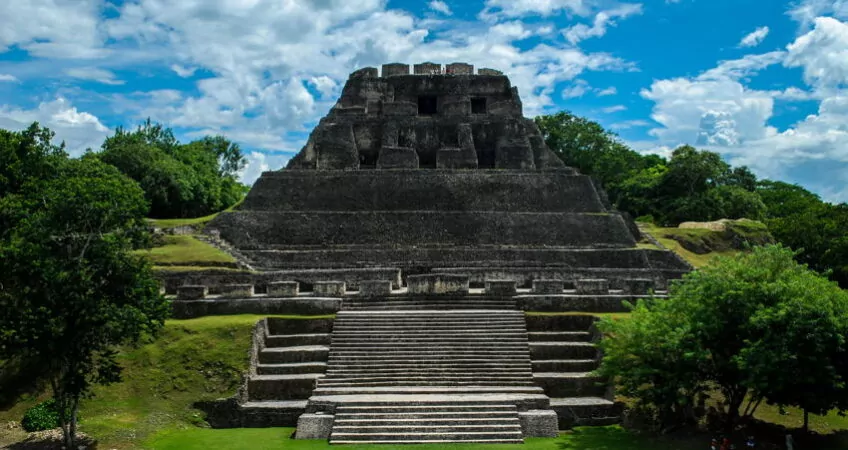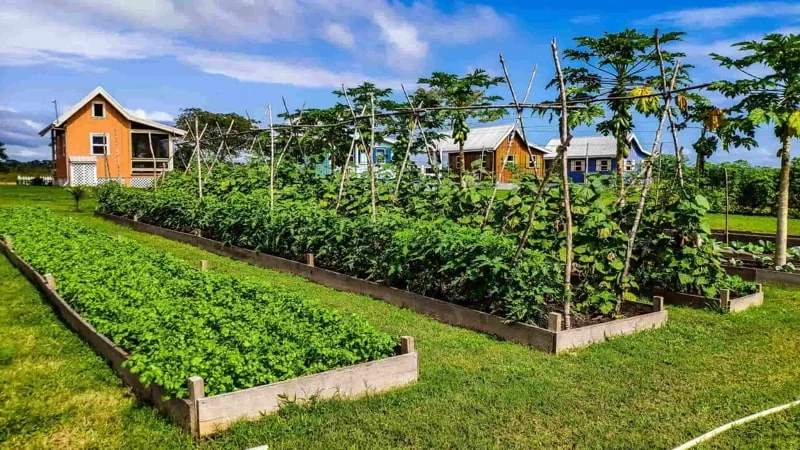
History Of Belize: From Maya Settlement To Melting Pot
This Is Still One Of The World's Top Offshore Havens
In addition to the Maya, you’ve got the Kriol people. The Kriol of Belize are descended from the British and Africans who settled much of the country’s coastline in the 17th, 18th, and 19th centuries. They, like the Maya, continue to influence local politics, the economy, and social life.
English is the official language of Belize, but Kriol is the lingua franca. Belize is a melting pot, a bouillabaisse—or, as the Belizeans might say, a boil-up. “Boil-up” is a Belizean Kriol gumbo made with yams, cassava, tomatoes, onions, sweet potatoes, fish, pig’s tail, water, salt, pepper, dough, eggs, plantains, and bananas. An exotic mix of familiar ingredients… and that’s very Belize.
Timber!
Since “Survivor” and “Temptation Island” put it on America’s radar, sleepy little Belize has been attracting attention for its white-sand beaches, coral reef, Maya ruins, and virgin rainforest.
Historically, it was the country’s land, water, gold, timber, and oil. These are the agendas that have been bringing people to Belize since the Maya settled in the region more than 4,000 years ago. At one time, the forests, coastlines, and rivers of this country supported an agrarian Maya population of nearly 500,000, about 150,000 more people than live in Belize today.
Life in Belize, in the time of the Maya and today, revolves around its rivers, once its highways of commerce and still an important part of this country’s economy. Belize has only 3 paved highways but 35 riverine systems. The Belize River catchment and watershed, including the Macal and Mopan River tributaries, are home to half the country’s population.
The natural life in Belize today is similar to the natural life of this country in Maya times. Explore caves and Maya temples, and you find hieroglyphs depicting the same iconic flora and fauna you see in modern-day Belize. Towering ceiba trees (the Maya Tree of Life), colorful toucans, and wild jaguars continue to thrive in this still very undeveloped country.
One of the Mayan creation stories features an iguana with the Earth riding on its back. The iguana has existed in the tropical forests of Central America since the Cretaceous Period. The Yucatec Maya called the iguana huh, and today the locals call them bamboo chickens.
Huh, bamboo chicken?
People sometimes wonder what happened to the Maya. They’re alive and well and living in Belize. The Yucatec, Mopan, and K’iche’ Maya were the country’s first civilizations, and their descendants live along this country’s coastline and in its interior jungles still today. They represent about 11% of the population and are active in all segments of society. The Maya people, their culture, and their history are a big part of what defines modern Belize.
In addition to the Maya, you’ve got the Kriol people. The Kriol of Belize are descended from the British and Africans who settled much of the country’s coastline in the 17th, 18th, and 19th centuries. They, like the Maya, continue to influence local politics, the economy, and social life.
English is the official language of Belize, but Kriol is the lingua franca. Belize is a melting pot, a bouillabaisse—or, as the Belizeans might say, a boil-up. “Boil-up” is a Belizean Kriol gumbo made with yams, cassava, tomatoes, onions, sweet potatoes, fish, pig’s tail, water, salt, pepper, dough, eggs, plantains, and bananas. An exotic mix of familiar ingredients… and that’s very Belize.
Freedom Seekers Welcome
Today, Belize is welcoming a new population of freedom seekers—North American retirees and expats.
Belize is a nation of independent thinkers and doers, a country where you make your own way and where, while you’re doing it, no one is making any attempt to thwart your efforts.

Including the Belizean government. This is a poor country. The government doesn’t have enough money to get up to any real trouble. And, if they tried, the Belizeans wouldn’t allow it. The focus here is on very local-level government—addressing the crime problems in certain neighborhoods of Belize City, for example, or trying to dissuade the Guatemalan banditos who occasionally wander over into Belize in search of a couple of good horses to steal.
Leave The Troubles Of Today's World Behind
Arriving in Belize, stepping off the plane, and walking across the tarmac to the one-room arrivals hall of the airport, you have a sense of leaving the rest of the world behind. Belize and her people operate according to their own rules and mind their own business. The troubles, uncertainties, and worries that seem so all-consuming in the United States and elsewhere in the world right now fade away here. You’re faced with a land that remains a frontier, delightfully undeveloped and oozing potential.
Remember, this is also a tax haven, thanks to the British, a place where your financial affairs are your own.
Belize is one more thing—one of the most user-friendly places in the world to establish foreign residency, meaning that, if you decide Belize is a place where you’d like to stick around indefinitely, you won’t have any trouble organizing to do that legally.
At the same time, you don’t have to be physically present year-round in the country to qualify for permanent residency and to take advantage of the tax benefits of that status. Come to visit for as few as four weeks a year, and your status remains intact.
After they’d colonized this spot, the English were under such constant pressure from Spain that they were reluctant to establish any formal government to manage Belize for at least a century. From the beginning, as a result, Belizeans have had to be self-sufficient. This remains the driving force behind Belizean culture.
The country has always attracted folks who value independence and freedom. It also boasts some of the Caribbean’s most beautiful beaches, world-class diving, an abundance of sunshine, rain forest adventure, and an affordable cost of living. If those things interest you, you should get to know Belize better.
Kathleen Peddicord



